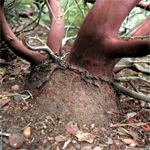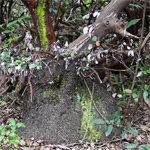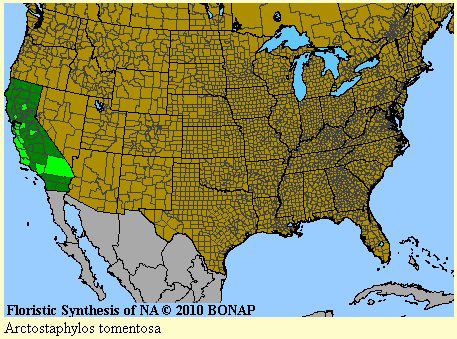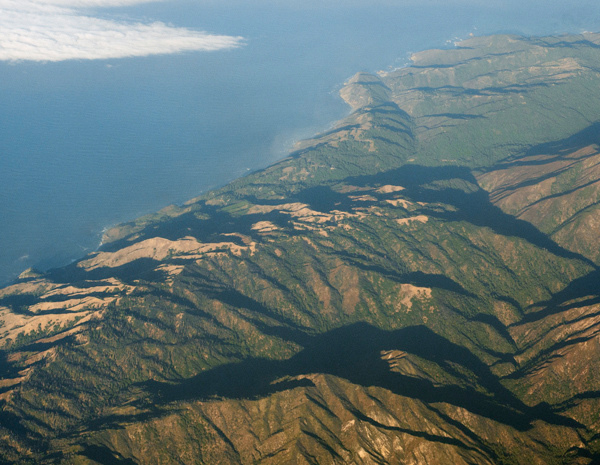Botany
Name (specie concercerned with pipe manufacture)
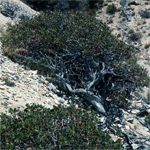 click to enlarge
click to enlarge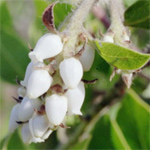 ©
click to enlarge
©
click to enlarge
- Botanical name: Arctostaphylos tomentosa
- subsp. crustacea. and/or subsp. crinita
- Fam : Ericacae (Heath family)
- Common name : Brittle-leaved Manzanita
- Langage: Manzanita means "little apple" in Spanish
Flowers
- White,
- waxy dangling urns,
- in dense clusters at ends of branches.
Blooms: January - March.
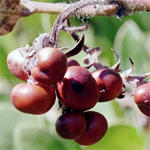 ©
click to enlarge
©
click to enlargeLeaves:
- Slightly toothed
- 5 cm (2 inches) long
- On petioles (leaf stems) almost as long.
Fruit
- Reddish-green "little apples"
- diameter ~ 1cm.
- in clusters. April - June.
Burls
The Brittle-leaved Manzanita has a burl at its base, which is partially underground and nearly impervious to fire like Mediterranean Briar (Erica arborea).
Mission Briar
"Mission Briar" is the other name for Manzanita when used to craft smoking pipes from its burl. It comes from the proximity of a catholic mission on the harvest aera (see "Monterey" pipe boxes).
The properties (fire resistance, hardness, grain density) of this wood are by far not equivalent to Mediterranean Briar, but certainly better than Mountain Laurel's (Kalmia latifolia), an other war-time Briar substitute used by Breezewood or Trapwell.
In 1941 the Pacific Briarwood Company (Watsonville CA), a KB&B subsidiary, began to harvest the burls growing on the slopes of the Santa Cruz Mountains (CA). They were pulled out the ground with tractors and the process wiped out many Brittle-leaved Manzanita plants. Nevertheless the specie doesn't seem critically endangered today (2011).
The harvesting began to decrease in 1943 when the first Algerian Briar arrived again. But US magazines promoted "Mission Briar" pipes at least until 1947 indicating the burls could have been pulled up, let's say, until 1946.
Location
In the map below: Brittle-leaved Manzanita (Arctostaphylos tomentosa) only grows in California (dark green) and is endemic to this state. The counties concerned are in light green. The crustacea and crinita subspecies are resident of lower-elevation mountains mostly on the Pacifica side.





